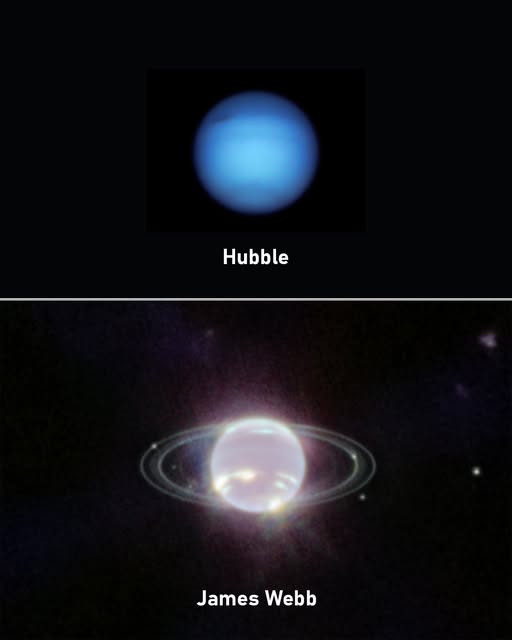
Neptune seen through two different eyes: JWST vs. Hubble
Ever wondered why these images look so different? Let’s break it down.
Color Differences:
The Hubble Space Telescope views Neptune in visible light—just like our eyes do. That’s why Neptune shows up in a bright, deep blue. This color comes from methane in its atmosphere, which absorbs red light and reflects blue, making it pop in those Hubble images.
Meanwhile, the James Webb Space Telescope (JWST) sees in infrared light, which our eyes can’t detect. Instead of blue, Neptune appears white and glowing, with a ghostly, icy look. Why? Because methane absorbs infrared light really well, making most of the planet look dark—except for spots where high clouds reflect some light.
Bonus Detail – The Rings!
One of the coolest features in JWST’s view is the stunning clarity of Neptune’s rings—something we hadn’t seen this clearly since Voyager 2’s flyby in 1989! Even Hubble struggled to spot them, as they’re faint and far from the Sun.
The first Webb image of Neptune dropped in September 2022, and it blew astronomers away with its incredible level of detail.
